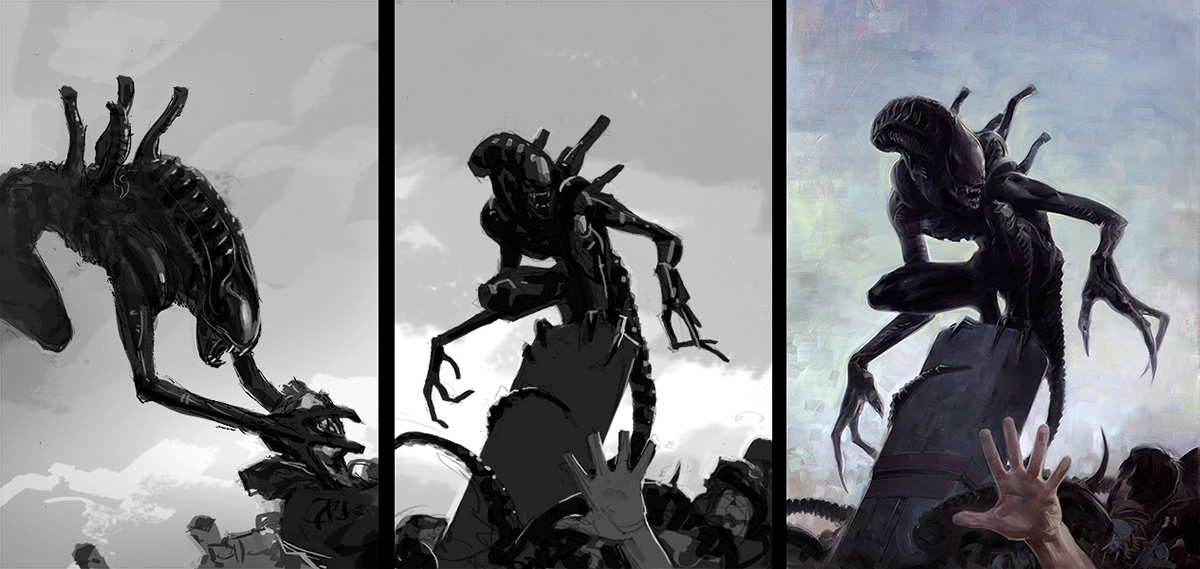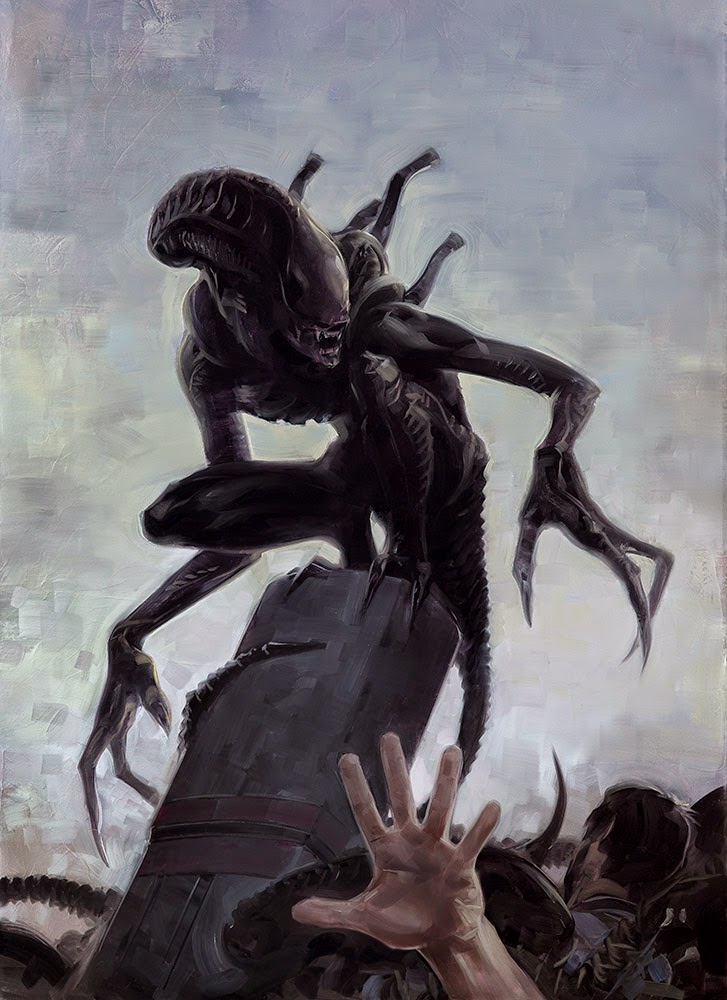

The sketch is arguably the most critical stage of an illustration. Conjuring thumbnails, narrowing the concept, clarifying the message, all of it boils down to the sketch: the blueprint for what will eventually be the final piece. For me, lazy sketching tends to result in client misunderstandings, technical frustrations, slower execution, and (worst of all) lukewarm finals. I respect the sketch phase. Up until a year ago, it was also the one step I absolutely dreaded.
Before last fall, I did all of my sketching in Photoshop. Thumbnails were pencil and paper and sometimes those would be scanned in as the base layer, but the real work was all digital. My problem is that I just don’t really enjoy working digitally. Something about it has never felt very satisfying to me.


can’t say for sure where the interest in sketching in paint started, but I believe the thing that finally tipped me to try it out was a box of preliminaries by Robert Maguire that were being sold for obscenely low prices at San Diego Comic Con. I have always loved seeing these sorts of miniature illustrations whenever I come across them and, for whatever reason, these in particular inspired me. It occurred to me that sketching might be more fun if I could do it this way. At this point I’ve done hundreds of 5x7 inch figure studies so I knew that I was comfortable at that scale. I decided to try doing something similar on the next job where I’d have some creative flexibility and a comfortable deadline.
I decided my surface should be the same as my typical go-to (Masonite primed rough with acylic gesso). I wanted to work monochrome, but decided a colored ground would help give the pieces a bit more tonal variety and allow me a “spot color” if I needed it, so I coated each panel with cadmium red acrylic. This method was something I was already testing on my “re-cover” series and the success of those encouraged me. The tricky part was altering my workflow.


For years, my process had been: thumbnails, sketches, client notes, reference, move to final. I could still work that way, but jumping into sketches without reference felt too chaotic. Additionally, I wanted to maintain the early stage flexibility that I found so usefully with digital tools and that could get pretty messy in oils. In the end, I decided on a strategy which I worried might be counterproductive or inefficient. I felt it was worthwhile to test though. The new workflow would be: thumbnails, reference, digital composite (what some call frankensteining), oil sketch, client notes, move to final. The pushing and pulling would be handled in the reference composite and then it would all get tied together into something presentable (and representative) in the oil sketch.

There were a few obvious drawbacks here. The first and most obvious was I would have to shoot way more reference than before. Instead of shooting for the chosen idea, I was working up multiple ideas. This also ran the risk (which has bit me a few times so far) of having the client want completely new sketches in a new direction which meant bringing the model back in for a second shoot (and paying for that second shoot). There was also a slight concern about letting the reference drive the sketch as oppose to the other way around.
The upshot of all this was that once I had approval, I could dive straight into the painting with no delay and it would be as close as possible to the approved sketch because my reference was already assembled. It felt like a fair exchange, all things considered.

I’m happy to say that first set worked out. It worked out so well that I haven’t done a single digital sketch in the ten months since. As it turned out, the new workflow didn’t really slow me down but did have some surprising benefits.
One of the obvious perks to this whole thing is having little originals instead of digital throwaway roughs which nobody besides the client would ever see. But when each one is an actual little painting, they all get to live. Maybe not large and in full color, but they all end up getting painted and, as a result, still feel as though they‘d been “realized“ in a satisfying way.
That leads into the second surprise: When you are painting every sketch, you weed out the mediocre ones much sooner. The result here is stronger sketches to select from and, in the end, stronger finished paintings.

One last little perk, and it may be anecdotal (like any of this isn’t), but I feel like clients are more prepared for painterly finals if they review painterly sketches. Since I started sending oil sketches, I can’t remember any clients asking me to arbitrarily tighten up brush strokes, smooth the render, or any similar requests which normally make me a bit bonkers. The oil sketches really mimic the feel and quality that I’m ultimately going for in a way that just makes sense. In general, these seem to be far fewer third act surprises and the clients seem to appreciate that almost as much as I do.
And the final surprise is that none of this seems to take any more time than my old process. I have a few theories why, but the one that makes the most sense is that I actually sit down and enjoy my sketches now instead of wasting hours (days?) avoiding them. Who knew allowing yourself to have fun when you work could actually give better results?
Thank you for viewing my project.
The complete original article posted on Muddy Colors blog.
Follow me on Facebook.


